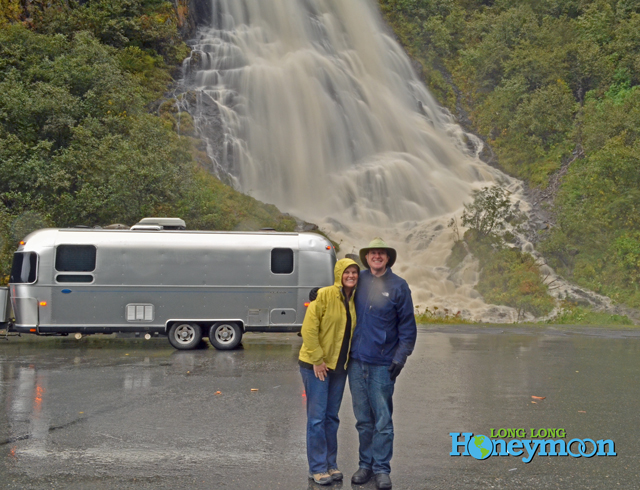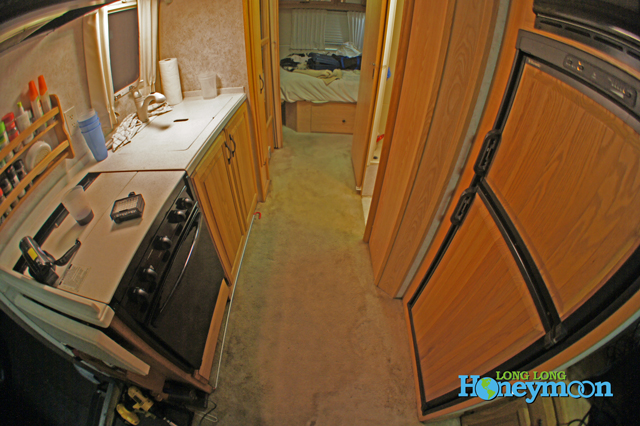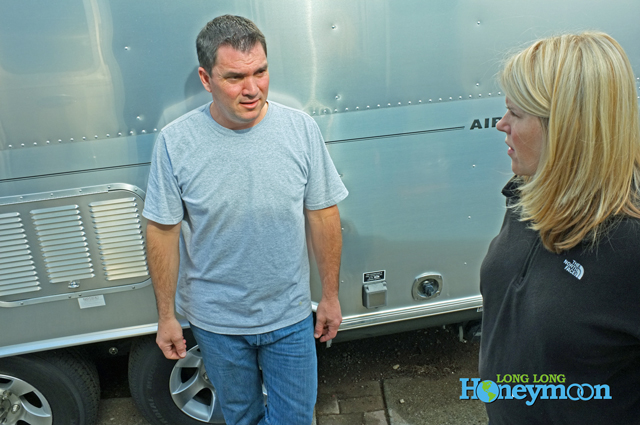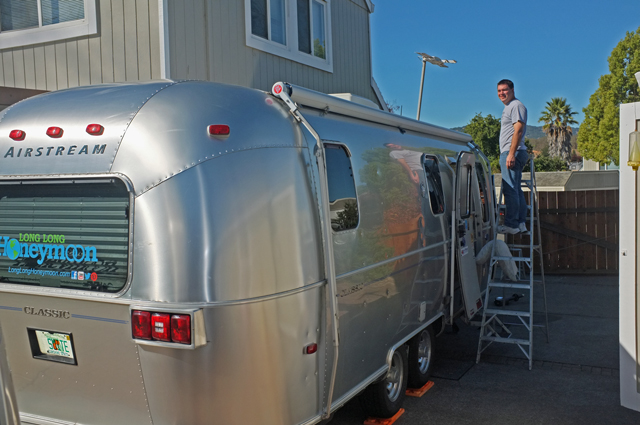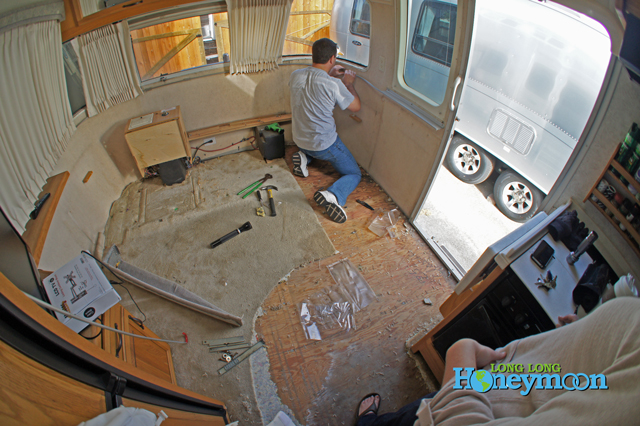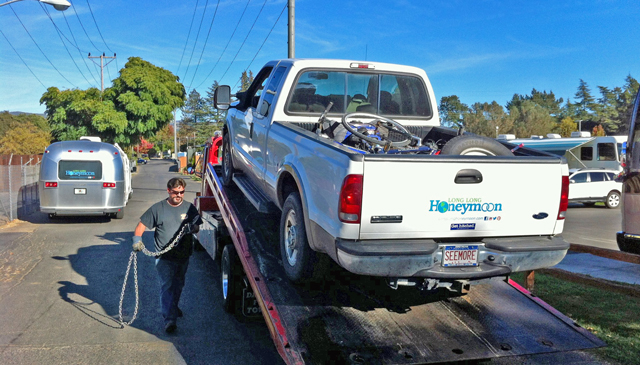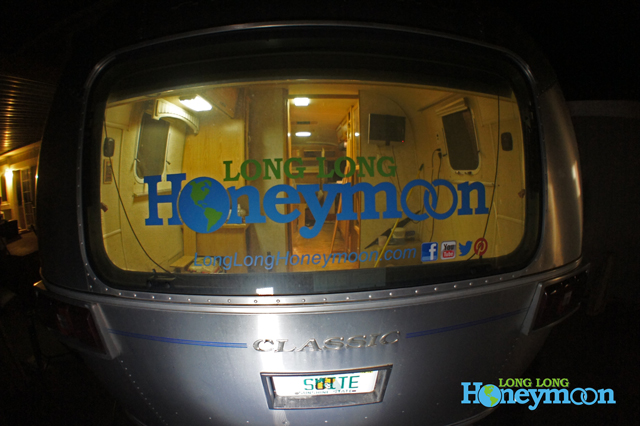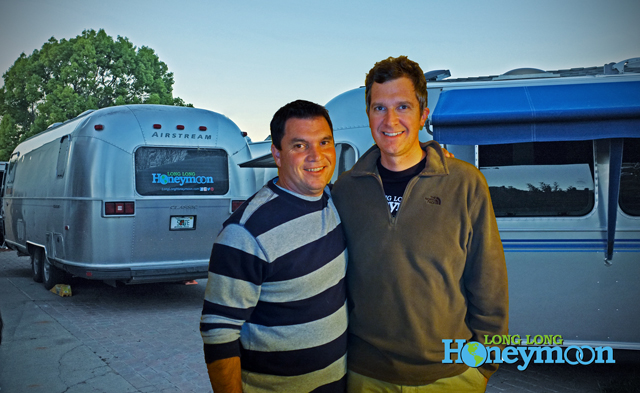In 2012, we towed our Airstream on a 14,000 mile road trip. We traveled 5000 miles from Alabama, exiting the United States from Montana, branching through Alberta, and then along the Alaska Highway through British Columbia, and the Yukon, all the way up to the Alaska border. Then we drove around the Alaska interior (visiting Tok, Fairbanks, Denali, Palmer, Wasila, Anchorage, Homer, Portage, Seward, Glennallen, Haines, and Skagway) for another 3000 miles. Then we towed down the Cassiar Highway through British Columbia another 3000 miles to California. Then we made our way home over the course of another 3000 miles. According to our odometer, it was about 14,000 miles from start to finish.
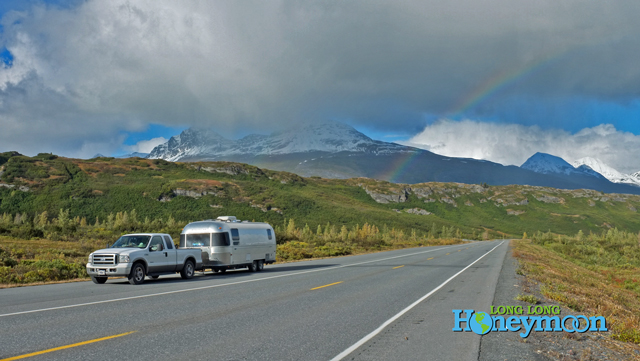
A few fleeting rays of sunshine as we drive towards Valdez (which soon became our own personal Waterloo).
“Wasn’t that trip hard on your rig?” you may ask.
Indeed, it was a bit hard on our rig. Although we never suffered a major catastrophe to our Airstream, nor did we emerge unscathed. (Our truck did suffer a catastrophe; more on that subject later.)
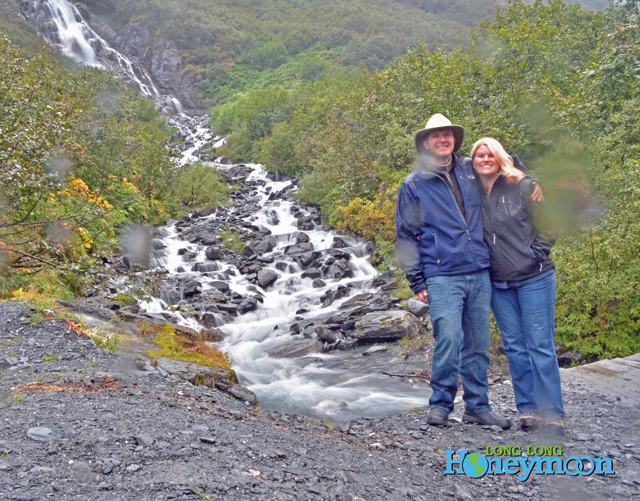
Virtually impossible to snag a picture in Alaska during rainy season without at least one drop of water on the lens.
Of course the general assumption is that the widely feared Alaska-Canada Highway (also known as the “Alcan”) is hell on all vehicles. It gained its legendary reputation in the 1940s, when it was carved out of Canadian wilderness by the U.S. military over the course of six frenetic months. What kind of 1700-mile road can you build in six months? Not much of one. That original road was narrow, rough, and brutally destructive to all but the most rugged military vehicles.
But I am here to report that the modern Alaska Highway isn’t so scary. Over time the original Alaska Highway has been replaced by a new and improved road. Despite what you see in this video, the Alcan is not as bad as you think. Yes, the road surface is radically uneven in many places due to frost heaves (areas of “permafrost,” permanently frozen ground that causes asphalt to lie unevenly). This caused our Airstream to frequently impersonate a horizontal martini shaker.
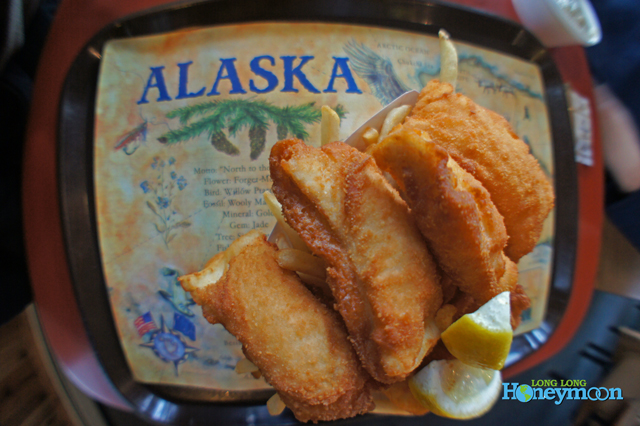
$18.90 for halibut fish & chips ($28.00 with drinks and extra tartar sauce). Expensive, fattening, and delicious.
Due to the frost heaves, the Alcan was rough on our rig’s suspension. But traveling the Alcan was more enjoyable and less stressful than towing through New Jersey, Los Angeles, Miami, or Washington D.C. That’s because there’s little traffic on the Alaska Highway. There are few people whatsoever. The capital of the Yukon, Whitehorse, boasts a whopping 25,000 people. At times, you may find yourself 100 miles from the nearest fueling station (and that lonely gas pump may constitute the entire “town”). If you like camping in the remote places of the world as I do, you will love traveling the Alaska Highway.
Over the course of the trip, did we suffer some damage to our Airstream? Yes. There was one particularly terrible stretch of road, located near the appropriately named “Destruction Bay” in Yukon Territory. That stretch of the Alcan was undergoing renovation. At the time we arrived, the road was composed mostly of oil, dust, gravel, and small boulders. It was sort of like that scene in The Empire Strike Back when Han Solo flies the Millennium Falcon through an asteroid field. Here we took on some fresh rocks dings in our Airstream’s fascia. At some point we hit a rock that punctured our freshwater tank, causing all of our fresh water to drain out. This converted our Airstream into a de facto aluminum tent. (We were able to temporarily sidestep the water woes by stopping in full hookup campgrounds, and we later patched up the water tank in Fairbanks.)
The Alaska adventure was more like “death by a thousand paper cuts” than a quick slash to the throat. Or perhaps the correct analogy is Chinese water torture. Drip, drip, drip. We suffered water leaks from multiple places, emanating from both the interior and exterior of our trailer. Massive external water leaks do not go well with the September onset of Alaska’s rainy season. And yes, we had leaks coming from inside our Airstream – the plumbing appeared to be leaking from directly beneath the cabinetry (the worst possible location, since it was inaccessible without removing the cabinetry). We also had leaks in the rear, ceiling and front of the Airstream. These were caused by a variety of factors, including worn out weather sealing, a poorly installed skylight, and the impact of a zillion violent wiggles along the highway.
Someone once told me that when traveling along a normal highway, an Airstream encounters stresses to its structure that are the equivalent of an earthquake – one registering four on the Richter Scale. On the Alcan, that earthquake is even more significant, and it’s a daily battering. Over time, a pipe or hose may develop a leak. A weather seal may develop cracks and fail. These are small problems at first, just like the first hole in a failing dike. Then one day you wake up without a single dry spot on your soggy carpeted floor. Overall, we may have been fortunate. I met one RV owner who told me an entire cabinet dislodged from his wall of his brand new trailer.
So why am I saying that the Alcan is not too bad? In fairness, if you are to undertake any 14,000-mile road trip in any vehicle, you will expect to encounter some problems. Factor in the fact that we were towing an 8000-pound trailer along the Alaska and Cassiar highways, and it’s no surprise that we picked up a few bruises. In addition to the water flowing fast and free throughout our Airstream, we suffered a tire blowout (in Nebraska), a failed electric jack (due to age), and a badly dented step (due to whacking one of those huge orange road cones near Vancouver, British Columbia). By the time we were wrapping up our trip to Alaska, it felt like we were limping instead of towing.

Pulling back the carpet revealed some interesting stuff, including this model designation left by the factory. We also found no small amount of beach sand.
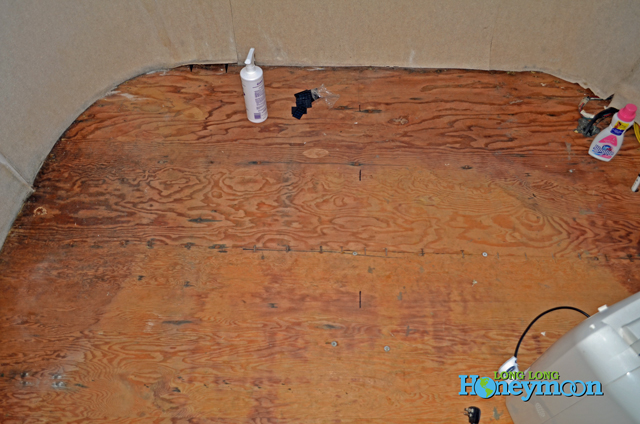
Bedroom area – that section on the left side was thoroughly soaked with water. Had we neglected the problem for too long, the result would be wood rot (which results in having no floor). Thankfully we caught it in time.
Thankfully, we have a friend in the Airstream fixin’ business. His name is Vinnie Lamica and he owns Vinnie’s Northbay Airstream Repair. He’s a fellow Airstream owner and shares our passion for the brand. I sincerely can’t think of anyone whom I’d rather have working on our Airstream. He not only cares about what he’s doing, he clearly loves it. He tackles Airstream problems with the unbridled enthusiasm of someone solving a giant puzzle. During our visit in California, we dubbed Vinnie to be “the Airstream Whisperer” – he clearly has a knack for bringing troubled Airstreams back from the brink of despair. Every time he touches something, he leaves it looking better.
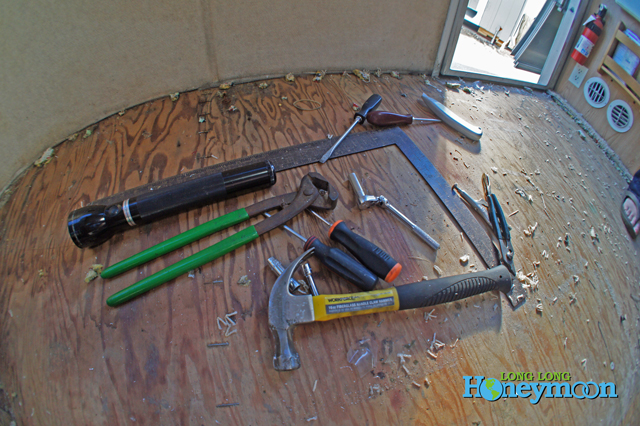
A few tools of Vinnie’s trade. I wish I worked well with these things, but I’m better suited for computers and cameras.
As fate would have it, we spent more time with Vinnie than originally planned. Our faithful truck SEEMORE suffered a catastrophic engine failure in Vinnie’s hometown. That’s the subject of a separate video and article; suffice to say that SEEMORE’s EGR cooler and oil cooler died. Although this happened to us on return from our Alaska trip, I believe it would’ve happened eventually, no matter where we were going. The EGR cooler is a known weak link in our 6.0L diesel engine.
With SEEMORE in the shop, we had ten full days of downtime. During that time, Vinnie led the way as we subjected our Airstream to a revitalizing spa treatment and extreme home makeover, complete with cosmetic surgery.
When all was said and done, I told Vinnie that we arrived at his workshop with our Airstream in its worst condition; and we departed with it being in its best condition. Over the course of ten days, we brought it back. This video is the first in a series that will document all of our Alaska recovery efforts.

